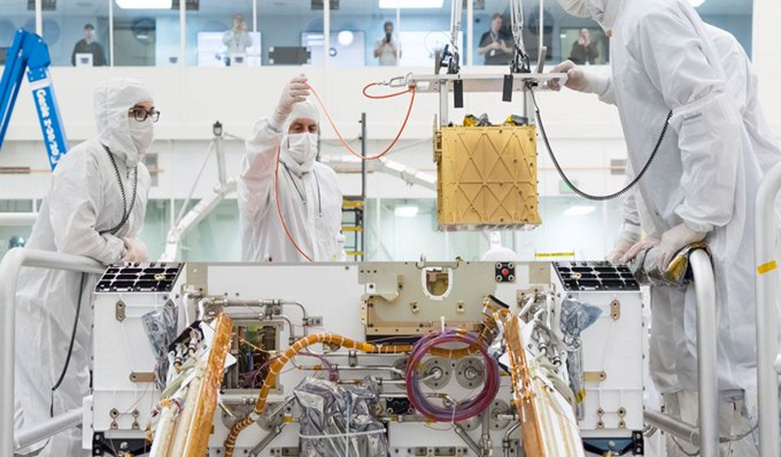NASA's experiment successfully completes its mission to generate oxygen on Mars

The US space agency NASA announced that its oxygen generation experiment that accompanied the Perseverance rover successfully completed its mission and generated oxygen on the Red Planet.
NASA reported that the device, called the “Mars In-Site Oxygen Resource Utilization Experiment” (MOXIE), successfully extracted oxygen from the Martian atmosphere about 16 times during the mission aboard NASA’s Perseverance rover.
The tool was much more successful than its creators at the Massachusetts Institute of Technology (MIT) expected, as it efficiently produced oxygen that astronauts could use on future missions to the Red Planet and which would also serve as propellant for rockets when they returned to Earth.
Producing oxygen from Martian air is difficult, considering that the planet's atmosphere consists mostly of carbon dioxide (95%) and nitrogen (3%), and it contains only traces of oxygen, which means that it is impossible to breathe on Mars, let alone explore it. .
Here comes the role of the microwave-sized device MOXIE, which began operating in 2021, after its arrival on board the Perseverance rover.
NASA said in a statement on Wednesday that over the past two and a half years, the device has produced 122g of oxygen, which is enough to keep a small puppy alive for 10 hours.
This may seem like a lot of time and effort for a small amount.
NASA said that now that scientists know the technology works, they can begin to scale it up in hopes of one day producing enough oxygen for humans to breathe and fuel to power a rocket back from Mars.

“By proving this technology in real-world conditions, we are one step closer to a future in which astronauts live beyond Earth on the Red Planet,” said Trudy Curtis, technology demonstration manager for NASA's Space Technology Mission Directorate, according to the statement.
MOXIE's performance was twice as high as expected. During a year of testing on Mars, MOXIE successfully completed all its technical requirements and operated in a variety of conditions.
In June, MOXIE exceeded its maximum expected production level, producing 12g of oxygen per hour, twice what was expected, with a purity of 98% or better, according to NASA.
It was a risky experiment that could have harmed MOXIE, but in the end it proved the amazing capabilities of the technology.

HOW MOXIE PRODUCES OXYGEN ON MARS
MOXIE works by separating one oxygen atom for every carbon dioxide molecule in Mars' thin atmosphere.
NASA said scientists could use the MOXIE experimental project to inform the next stage of the technology, which is building a larger, more sophisticated system that includes an oxygen generator along with a way to liquefy and store the oxygen it produces.
“Developing technologies that allow us to utilize resources on the Moon and Mars is critical to building a long-term lunar presence, creating a robust lunar economy, and allowing us to support an initial human exploration campaign to Mars,” said Pamela Milroy, NASA’s deputy administrator, according to the statement. “.
Source: Business Insider

